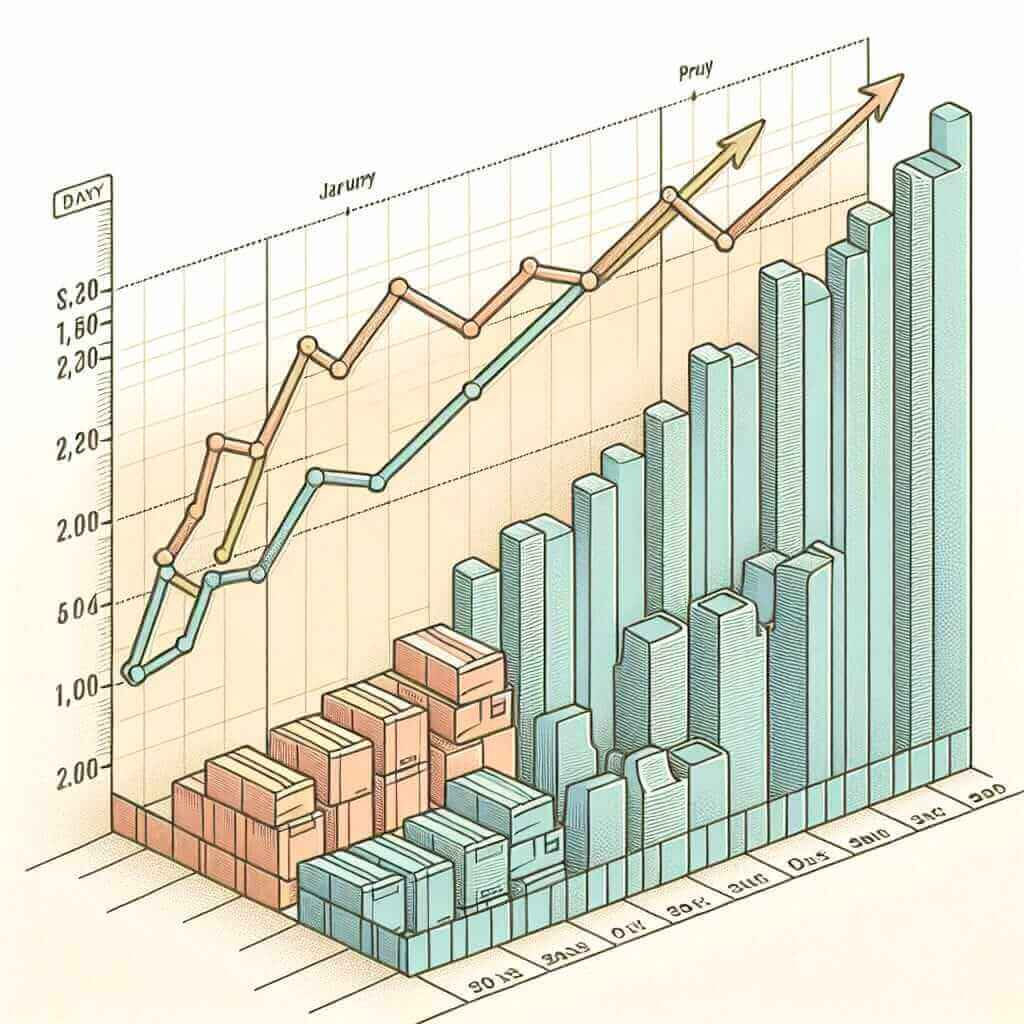Graphs and charts are frequently used in the IELTS Reading section to present data visually. Understanding how to interpret these visual representations of information is crucial for achieving a high score. This comprehensive guide will equip you with the essential skills to confidently analyze and understand IELTS Reading graphs, ultimately leading to better overall performance in the exam.
Understanding Different Types of Graphs
1. Line Graphs
Line graphs illustrate trends over time. The horizontal axis (x-axis) typically represents time, while the vertical axis (y-axis) depicts the variable being measured.
Example:
A line graph might show the average temperature in London over a year, with the months on the x-axis and temperature in degrees Celsius on the y-axis.
2. Bar Charts
Bar charts compare different categories. The length or height of each bar represents the value of the specific category.
Example:
A bar chart could compare the number of students enrolled in different language courses, with each bar representing a different language.
3. Pie Charts
Pie charts represent parts of a whole. Each slice of the pie corresponds to a percentage or proportion of the total.
Example:
A pie chart might illustrate the percentage of a household budget allocated to different expenses like rent, food, and transportation.
4. Tables
Tables present data systematically in rows and columns. They are effective for showing precise numerical values.
Example:
A table might display the population of different countries, with columns for country name, population size, and population density.
Key Steps to Interpret IELTS Reading Graphs
1. Analyze the Title and Labels
Start by carefully reading the title of the graph and the labels on the axes. This provides crucial context and helps you understand what data is being presented.
2. Identify Trends and Patterns
Look for overall trends, patterns, and significant changes in the data. For example, in a line graph, is there a steady increase, a sharp decline, or fluctuations?
3. Pay Attention to Units of Measurement
Note the units of measurement used on the axes. This is essential for accurate interpretation and comparison of data.
4. Analyze Relationships Between Data Points
Consider how different data points relate to each other. For example, in a bar chart, which category has the highest value? Is there a significant difference between the highest and lowest values?
5. Don’t Over-Interpret
Focus on the information explicitly presented in the graph. Avoid making assumptions or drawing conclusions not directly supported by the data.
Applying Graph Interpretation Skills in IELTS Reading
IELTS Reading questions often require you to:
- Identify specific information from the graph.
- Summarize the main trends or patterns.
- Compare and contrast different data points.
- Draw conclusions based on the presented information.
Example Question:
(Referring to a line graph showing the sales of two products over a year)
Question: Which product showed the most consistent sales growth throughout the year?
Answer: To answer this question, you would need to analyze the slopes of the lines representing each product’s sales. The product with a consistently steeper, upward slope would indicate more consistent sales growth.

Common Mistakes to Avoid
- Misinterpreting the axes labels or units of measurement.
- Focusing on individual data points instead of overall trends.
- Making assumptions not supported by the data.
- Rushing through the graph analysis and missing key details.
Tips for Effective Practice
- Regularly practice interpreting different types of graphs from various sources.
- Focus on understanding the purpose and message conveyed by each graph.
- Use IELTS practice tests to familiarize yourself with the format and difficulty level of graph-related questions.
- Analyze your mistakes and identify areas for improvement.
Conclusion: Elevate Your IELTS Reading Performance
Mastering the art of graph interpretation is an essential skill for success in the IELTS Reading section. By following the steps outlined in this guide and practicing regularly, you can confidently tackle graph-related questions and improve your overall reading comprehension, ultimately boosting your IELTS score.